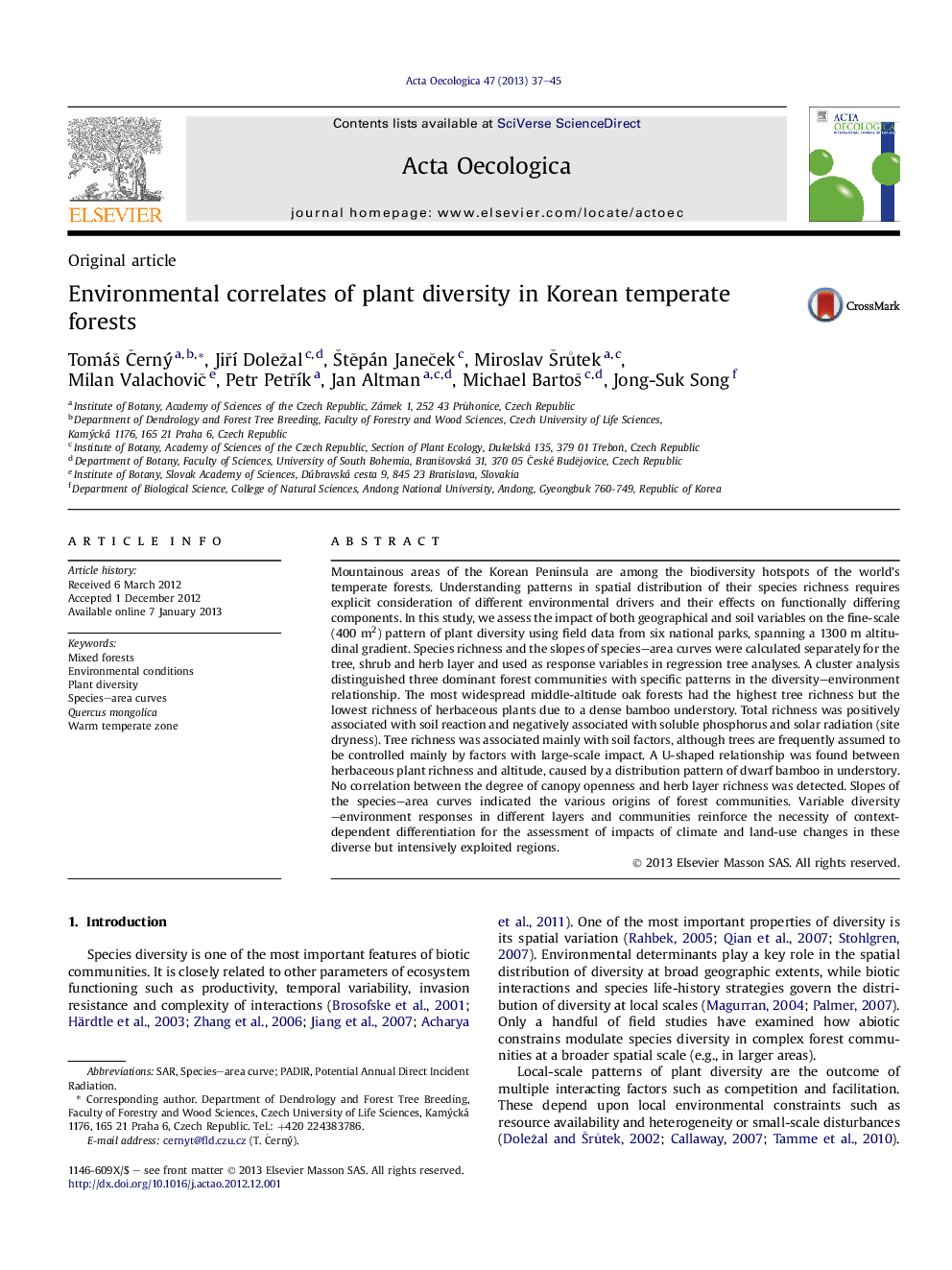| Article ID | Journal | Published Year | Pages | File Type |
|---|---|---|---|---|
| 4381104 | Acta Oecologica | 2013 | 9 Pages |
Mountainous areas of the Korean Peninsula are among the biodiversity hotspots of the world's temperate forests. Understanding patterns in spatial distribution of their species richness requires explicit consideration of different environmental drivers and their effects on functionally differing components. In this study, we assess the impact of both geographical and soil variables on the fine-scale (400 m2) pattern of plant diversity using field data from six national parks, spanning a 1300 m altitudinal gradient. Species richness and the slopes of species–area curves were calculated separately for the tree, shrub and herb layer and used as response variables in regression tree analyses. A cluster analysis distinguished three dominant forest communities with specific patterns in the diversity–environment relationship. The most widespread middle-altitude oak forests had the highest tree richness but the lowest richness of herbaceous plants due to a dense bamboo understory. Total richness was positively associated with soil reaction and negatively associated with soluble phosphorus and solar radiation (site dryness). Tree richness was associated mainly with soil factors, although trees are frequently assumed to be controlled mainly by factors with large-scale impact. A U-shaped relationship was found between herbaceous plant richness and altitude, caused by a distribution pattern of dwarf bamboo in understory. No correlation between the degree of canopy openness and herb layer richness was detected. Slopes of the species–area curves indicated the various origins of forest communities. Variable diversity–environment responses in different layers and communities reinforce the necessity of context-dependent differentiation for the assessment of impacts of climate and land-use changes in these diverse but intensively exploited regions.
► Plant richness–environment relation in Korean forests was systematically described. ► Tree, shrub and herb richness respond differently to altitude and soil variables. ► U-shaped herb layer richness–altitude relation was caused by dominance of bamboo. ► Assembly processes for forest communities differed along elevational gradient. ► Community-specific processes must be regarded if model future environmental scenarios.
